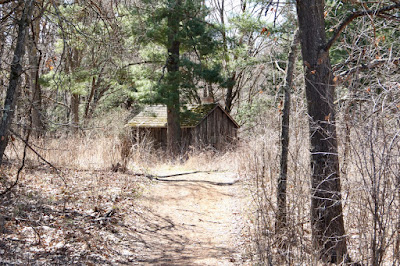 |
| the path is made by walking
Photo by J. Harrington
|
Lo and behold, there's lots of folks doing lots of good, creative work, making paths by walking them. Time to brighten up and join the parade. We may have mentioned some of these in previous postings, but until very recently hadn't managed to put all the pieces together in an alignment that makes sense.
Early this morning we read all of an interview with Kate Raworth, author of Doughnut Economics: Seven Ways to Think Like a 21st-Century Economist. In it, we found mention of Donella Meadows, Elinor Ostrum and several others who have been exploring and describing ways to have a sustainable economy.
 |
| there is more than one path through the woods
Photo by J. Harrington
|
This interview is only a small part of the growing treasure of resources being collected at the Next System Project, an initiative of The Democracy Collaborative.
Those collaborations provide both a framework of and examples of how to move toward attainment of the United Nations Sustainable Development Goals. We're seeing a growing number of references to how these goals are, or can be, readily incorporated into strategic plans for corporations, both for profit and not for profit, and governmental agencies.
Some of the bigger issues facing planet earth and its inhabitants these days derive from the complex of climate change and the action, inaction, and retraction on commitments to address and adapt to it. In a broad sense, Raworth's Doughnut and a future economy designed as regenerative and distributive gets at that. More specifically though, Project Drawdown identifies 100 solutions that not only address, but reverse, global warming. We've read, enjoyed and learned from several of Hawken's prior books, such as Natural Capitalism and Blessed Unrest. Past time for us to read Drawdown.
Many years ago we read, and were mightily impressed by, E.F. Schumacher's Small Is Beautiful: Economics as if People Mattered. It looks to us as though the seeds he planted germinated, grew and spread in time to offer us the possibility of a softer landing from our current unsustainable trajectory. As the small plane pilots are reported to say "any landing you can walk away from is a good one."
Like the Small Hole by the Path-Side Something Lives in
Like the small hole by the path-side something lives in,in me are lives I do not know the names of,nor the fates of,nor the hungers of or what they eat.They eat of me.Of small and blemished apples in low fields of mewhose rocky streams and droughts I do not drink.And in my streets—the narrow ones,unlabeled on the self-map—they follow stairs down music ears can’t follow,and in my tongue borrowed by darkness,in hours uncounted by the self-clock,they speak in restless syllables of other losses, other loves.There too have been the hard extinctions,missing birds once feasted on and feasting.There too must be machineslike loud ideas with tungsten bits that grind the day.A few escape. A mercy.They leave behindsmall holes that something unweighed by the self-scale lives in.
********************************************
Thanks for visiting. Come again when you can.
Please be kind to each other while you can.
No comments:
Post a Comment